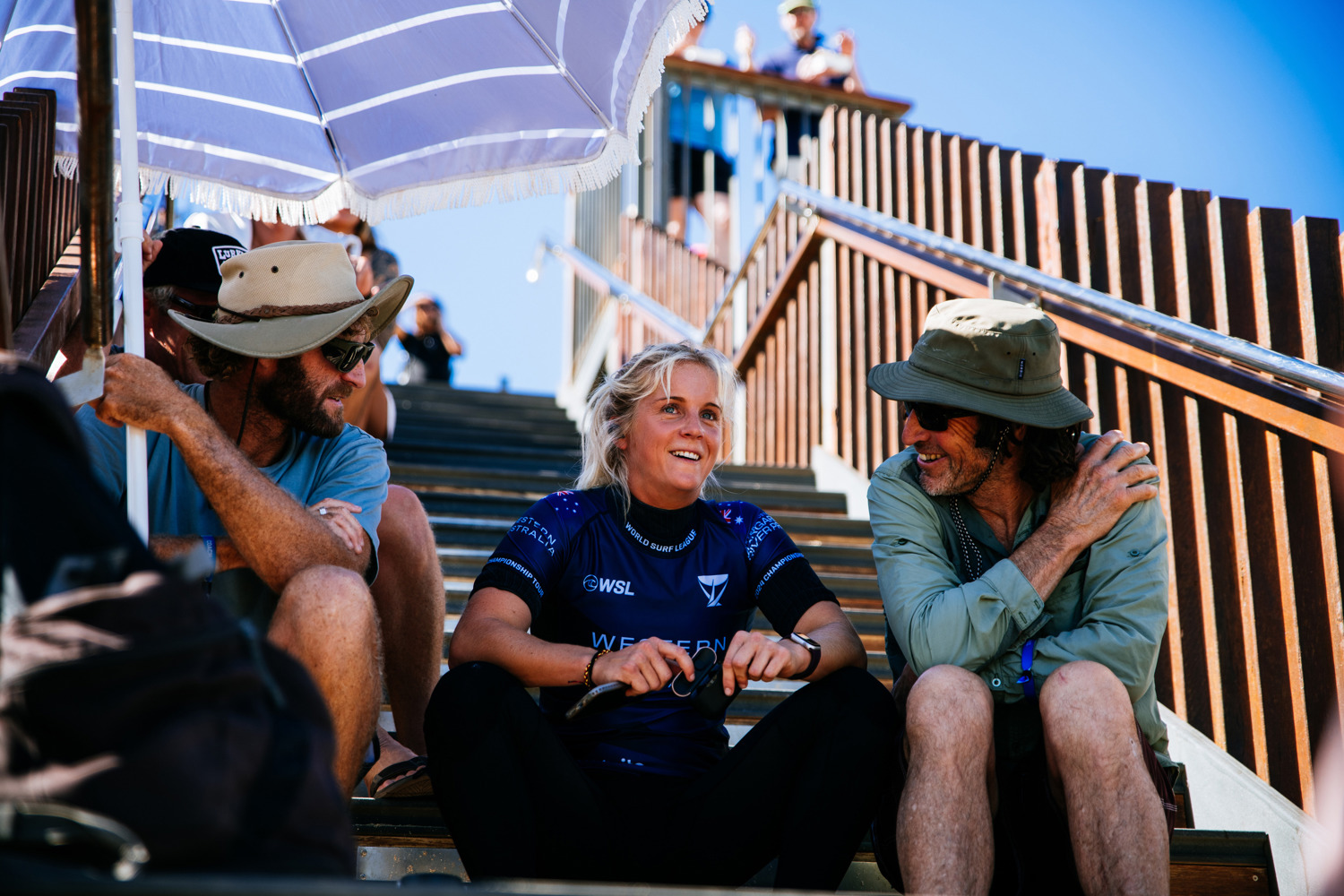Sophie McCulloch didn’t want to believe it at first – she tried to convince herself it was just a sprain.
But deep down the Biomedical graduate knew it was more serious.
“There was definitely a lot of denial before I got the MRI results,” Sophie says. “But then I got a call from my physio saying Hawaii wasn’t looking good.”
Her heart sank.
In a moment, she had six years of hard work ripped away from her by an unpredictable piece of backwash at Snapper Rocks while competing in the World Surf League’s Championship Tour – the premier international tour for professional surfers.
It’d taken her six years of slogging it out with other elite surfers on the Qualifying Series and Challenger Series – while completing a double degree in Biomedical Science and Marketing, mind you – to break through into most the sought after circuit for pro surfers.
The same circuit where people such as Sally Fitzgibbons, Stephanie Gilmore and Carissa Moore became household names.
But a few months after she’d earned a fairy-tale spot on the tour – in a legendary win in Hawaii – the incident with the backwash at Snapper happened, which resulted in a syndesmosis injury.
For those of us without a medical background, Sophie describes at as “a high ankle sprain and a complete tear of a major ligament in her ankle.”
“It was a pretty hard time, to be completely honest,” Soph says. “But at the end of the day, I think I became stronger for it.”
Sophie grew up in a medical family so she’d always been interested in not only human anatomy but science as well.
“When I was applying for uni, I was originally interested in occupational therapy,” Sophie says. “But then I started delving into Biomedical Science. It just really touched on everything I found fascinating about the human body.”

Bachelor of Biomedical Science
Gain a comprehensive understanding of how the human body works and what happens when diseases, infections and clinical disorders occur.
Biomedical Science program coordinator Dr Kate Mounsey said the degree is perfectly suited to anyone interested in learning about the body, with courses including physiology, pathophysiology, biochemistry, microbiology, medical genetics, immunology and pharmacology.
“Our graduates go on to work in a range of industries and occupations – from sports backgrounds to clinical and medical lab settings,” Dr Mounsey said.
“The degree is also an excellent foundation for further postgraduate studies in Medicine or research degrees.”
“We embed hands-on learning opportunities in places such as hospitals and research labs too, so our students graduate job ready.”
Sophie’s background – not just biomedical science but in learning – came in particularly useful when it came to healing her own injury.
“I wanted to understand exactly what was happening internally during my rehab so I not only knew what I had to do but why I had to do it,” Sophie says.
Being a studious student must be part of Sophie’s DNA – it has to be for her balance full-time competition while completing her undergraduate dual degree.
Sophie says it helped that she was part of UniSC’s High Performance Student Athlete team – especially when it came to deferring exams if they clashed with an event. But ultimately, it came down to personal discipline and organisation.
“You definitely have to prioritize study when the surf conditions aren’t very favourable, so that when the conditions are good you can make the most of those days,” Sophie says.
“When it came to competing overseas, the online resources that UniSC had made it easy for me to stay up to date too.”
Following the ankle injury, Sophie was eliminated from the CT last year after having to miss a couple of key events.
But this year, she was placed back on the tour after another competitor pulled out – before she faced elimination again at the controversial mid-season cut following the Margaret River Pro in Western Australia.
It’s been a rollercoaster couple of years, exasperated now by a devastating back injury while free surfing at the Box – a notoriously shallow reef break at Margaret River – that happened shortly after we originally spoke with her for this story.
Sophie told Surfer she got sucked up and landed on the ledge butt-first, compressing her spine, resulting in a bad fracture to her T12 vertebrae. She was ultimately airlifted to Royal Perth Hospital, where she was released a couple of days later in a brace.
“While I am absolutely devastated to be sidelined again, it’s quite easy to maintain a positive perspective because I know just how lucky I am that the injury wasn’t worse," Sophie told Surfer.
"I feeling very fortunate to be back on the Sunny Coast with friends and family. I’m in a brace for three months, and will hopefully return to the water shortly after that, but I’m not entirely sure when I will be back competing.”

High Performance Sport
Achieve your highest level in study, research, training and competition with our dedicated support networks and purpose-built facilities used by some of the world's best athletes.
Media enquiries: Please contact the Media Team media@usc.edu.au





